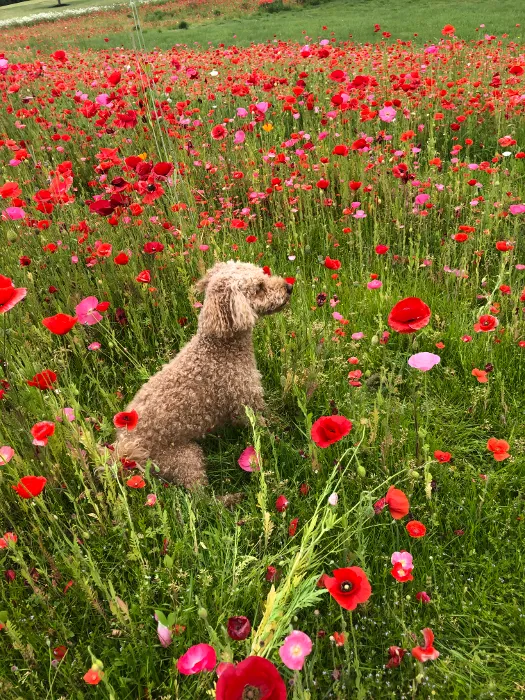Outdoor Plants That Are Toxic to Pets: A Complete Guide

One of the joys of having a beautiful garden or outdoor space is being able to enjoy it with our beloved pets. However, it's essential to be aware that some outdoor plants can be toxic to our furry friends. While many plants are harmless, certain species can pose a threat if ingested by dogs, cats, or other pets. In this blog post, we will provide a comprehensive list of both extremely and mildly toxic outdoor plants, ensuring that you can create a safe environment for your pets to roam and explore.
Extremely Toxic Plants:
1. Lily of the Valley (Convallaria majalis): This popular garden plant contains cardiac glycosides that can cause irregular heartbeat, vomiting, seizures, and even death in pets.
2. Azalea (Rhododendron spp.): Azaleas contain grayanotoxins, which can cause vomiting, diarrhea, weakness, and potentially life-threatening heart arrhythmias.
3. Oleander (Nerium oleander): All parts of the oleander plant, including the flowers and leaves, contain cardiac glycosides that can lead to severe gastrointestinal symptoms, irregular heartbeat, and even death.
4. Sago Palm (Cycas revoluta): The seeds of the sago palm are highly toxic, causing liver failure and neurological problems if ingested by pets.
5. Autumn Crocus (Colchicum autumnale): This plant contains colchicine, which can lead to severe gastrointestinal issues, kidney damage, and organ failure in pets.
6. Daffodils (Narcissus spp.): All parts of the daffodil plant, especially the bulbs, contain toxic alkaloids that can cause vomiting, diarrhea, abdominal pain, and even heart arrhythmias.
Certainly! Here are a few more outdoor plants that are known to be toxic to pets:
7. Lily (Lilium species): Several species of lilies, including Easter lilies, Tiger lilies, and Daylilies, are highly toxic to cats and can cause kidney failure even in small amounts.
8. Castor Bean (Ricinus communis): The seeds of the castor bean plant contain a highly toxic compound called ricin, which can cause severe illness or even be fatal to pets.
9. Yew (Taxus species): All parts of the yew plant, including the needles and seeds, contain toxic alkaloids that can cause cardiac and nervous system problems in pets.
10. Dieffenbachia (Dieffenbachia species): Also known as dumb cane, this plant contains calcium oxalate crystals, which can cause oral irritation, swelling, and difficulty swallowing if chewed by pets.
It's important to keep in mind that the toxicity levels of plants can vary depending on the species, the part of the plant ingested, and the size and health of the pet. If you have any specific plants in mind, it's best to research their toxicity or consult with a veterinarian to ensure the safety of your pets.
Mildly Toxic Plants:
1. Aloe Vera (Aloe barbadensis): While aloe vera is known for its medicinal properties, it can cause gastrointestinal upset, diarrhea, and vomiting in pets if ingested in large quantities.
2. Baby's Breath (Gypsophila spp.): This common filler flower can cause mild gastrointestinal upset and skin irritation in pets.
3. Chrysanthemum (Chrysanthemum spp.): The pyrethrins in chrysanthemums can cause mild gastrointestinal symptoms, drooling, and skin irritation in pets.
4. English Ivy (Hedera helix): English ivy can cause mild gastrointestinal distress, drooling, and skin irritation if ingested by pets.
5. Peace Lily (Spathiphyllum spp.): Ingesting parts of the peace lily can lead to mouth irritation, drooling, vomiting, and difficulty swallowing.
6. Snake Plant (Sansevieria spp.): Mild gastrointestinal upset and mouth irritation can occur if pets consume the snake plant.
7. Lilyturf (Liriope species): While generally considered mildly toxic, ingestion of large quantities of lilyturf can cause gastrointestinal upset and potential blockage in pets.
8.Tulip (Tulipa species): Tulip bulbs contain toxins that can cause gastrointestinal upset and irritation if ingested by pets.
Precautions and Pet Safety:
To ensure the safety of your pets, it is vital to take the following precautions:
1. Educate yourself: Familiarize yourself with the list of toxic plants and keep it handy. Learn to identify them so you can remove or avoid planting them in your outdoor space.
2. Create barriers: Install physical barriers or fencing to keep your pets away from areas where toxic plants are present.
3. Supervise outdoor activities: Supervise your pets when they are in the garden to prevent them from nibbling on plants.
4. Train your pets: Teach your pets basic commands like "leave it" and "drop it" to discourage them from approaching or consuming plants.
5. Consult a veterinarian: If you suspect your pet has ingested a toxic plant or is displaying symptoms of poisoning, seek immediate veterinary assistance or go to the Pet poison help line at:
1 (855) 764-7661 or https://www.petpoisonhelpline.com/
Creating a pet-friendly outdoor space involves understanding which plants can be
potentially harmful to our furry friends. By being aware of these extremely toxic and mildly toxic outdoor plants listed above, you can take the necessary precautions to keep your pets safe. Remember, the well-being of our pets is our responsibility, and a little knowledge and foresight can go a long way in ensuring their safety and happiness in our gardens.
Articles about Gardening:
Why Are Microgreens So Popular? Let’s Explore
https://inthegardensue.com/blog/why-are-microgreens-so-popular
Does pH of Soil Affect Plant Growth?
https://inthegardensue.com/blog/does-ph-of-soil-affect-plant-growth
Preserving Peony Flowers: The Marshmallow Bud Hack
https://inthegardensue.com/blog/preserving-peony-flowers-the-marshmallow-bud-hack
10 Common Mistakes when Growing Dahlias
https://inthegardensue.com/blog/10-common-mistakes-to-avoid-when-growing-dahlias
19 Shallow Rooted Plants for Your Raised Beds
https://inthegardensue.com/blog/19-shallow-rooted-plants-for-your-raised-beds
Yard work Gifts for Dad
https://inthegardensue.com/blog/7-best-garden-tools-and-gifts-for-dad



